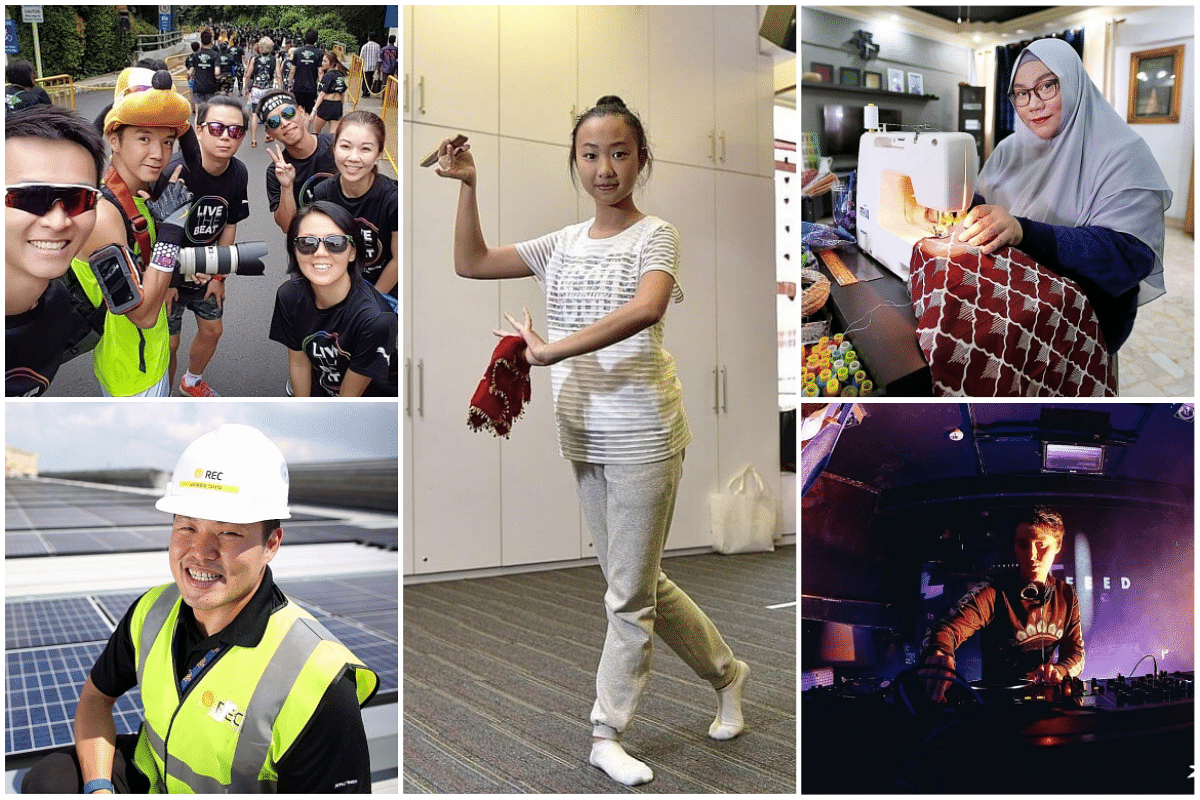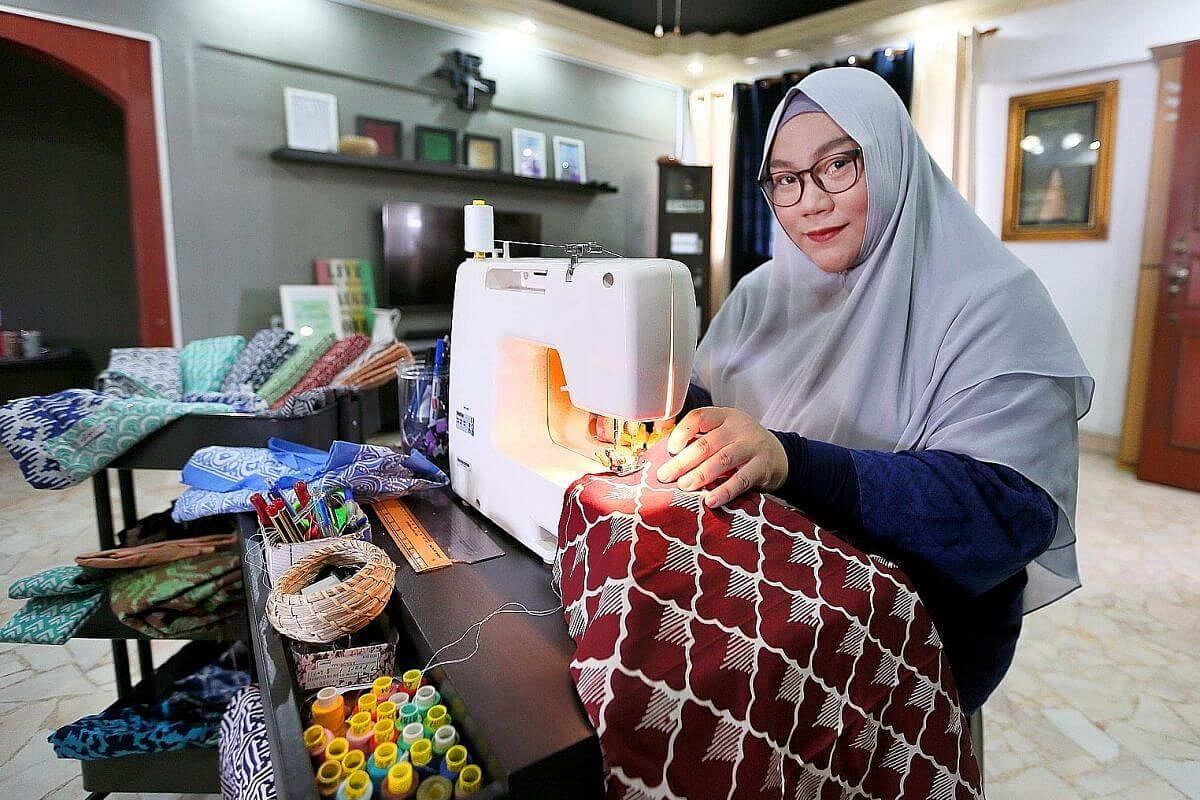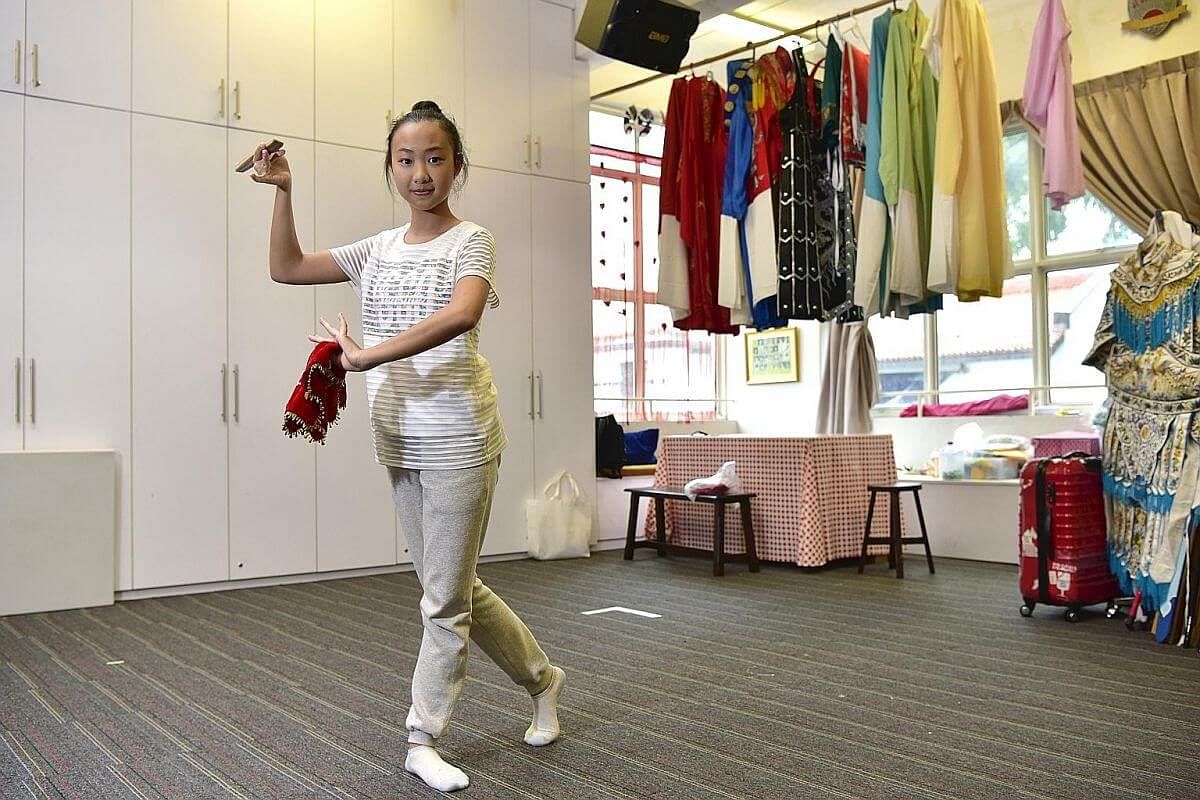Passion-powered Singaporeans
The Sunday Times talks to five locals and groups featured in the new Passion Made Possible campaign and finds out what they strive for and what drives them


SINGAPORE - The new Passion Made Possible brand, launched last month by the Singapore Tourism Board and Economic Development Board, shows Singapore as a passion-driven, spirited city with limitless possibilities.
With an emphasis on storytelling, the tourism campaign features local personalities and groups sharing stories about their passions on a wide range of topics, including food, the arts, fashion, music, sports and environmental issues.
As of last Thursday, the main video for this marketing drive has attracted more than 14.2 million views, 70,000 "likes" and 6,500 shares across the VisitSingapore Facebook pages worldwide and VisitSingapore YouTube channel.
The Sunday Times speaks to five personalities and groups featured in the campaign about the things that drive and motivate them, what they strive for and what they believe in.
1 Going green at work and at home

One of Tiger Beer's taglines is "Brewed by the sun", and this is thanks to the more than 8,000 solar panels atop Asia Pacific Breweries Singapore's brewery in Jalan Ahmad Ibrahim.
Installed in 2015, these panels can produce enough energy to power 600 four-room Housing Board flats.
Their installation, by local solar panel manufacturer REC Solar, is also expected to reduce annual carbon dioxide emissions by 1,500 tonnes.
Mr James Ong, 36, the company's sales technical support manager for the Asia-Pacific, wants to do more.
He has managed a project involving a floating test bed of solar panels on Tengeh Reservoir in Jalan Bahar, installed around the start of the year.
These panels are more efficient than those on rooftops, which can get too hot. The floating panels, being installed over water, are cooler and can yield more energy, he says.
The electrical engineering graduate from the University of Queenslandbecame passionate about the environment during his undergraduate days.
He is married to Ms Wendy Chong, 36, a senior human resource executive, and they have a daughter, Charlene, nine.
They do not own a car, preferring to take public transport or use ridesharing services instead.
Mr Ong, an avid cyclist, also cycles three times a week, clocking from 150 to 220km each week.
In their daily life, they reduce waste where they can: taking their own bags to supermarkets and recycling used cans and bottles.
Mr Ong says: "I want to set a good example for my daughter through our daily practices to educate her on the importance of being green."
2 Bringing batik into everyday life

Traditional batik cloth is usually associated with formal dress, but have you seen a batik iPad cover before? Or batik breastfeeding covers, pillow cases and children's clothes?
Revitalising batik's image as a material used for occasion dress is Singaporean Nur Zulaikha Hamdan, 32, who wants to bring the material into everyday life.
Under her two-year-old batik business Rustiqa, she sells batik fabric sourced from Indonesia, as well as products made from such fabric, sewn in her four-room Housing Board flat in Teck Whye.
Getting inspiration from fashion magazines and by looking at designs online, she makes apparel such as blouses, breastfeeding covers and children's clothes, as well as bags, pouches and lifestyle items such as cushion covers, pillow cases, book covers and iPad covers.
A tote bag can cost from $18 to $20 and a girl's dress from $28 to $36.
Batik refers to a technique of dyeing fabrics by using wax as a repellent, as well as cloth dyed using this method. Said to have existed since ancient times, it is mostly associated with the islands of Java and Bali in Indonesia, where it developed as an art form.
Batik is also made in other countries such as Malaysia, India, Bangladesh, Sri Lanka and Singapore.
Of the fabric, Ms Zulaikha says: "It is comfortable to wear, easy to wash and does not require much ironing. I love this because I hate ironing."
The former secondary school teacher, who taught food and nutrition, quit her job in 2015 to spend more time raising her three sons - Eir'Alie, eight; Eir'Zhan, five; and Eir'Zaqy, three. Her husband Mohamad Nuriman, 34, is a civil servant.
Being at home also allowed her to pursue her passion for batik.
So far, orders have come from as far away as Qatar and the United States, and she sends the finished products to customers via Speedpost.
Her dream is to eventually have a proper shop with employees.
She says: "There is a market - both here and overseas - for batik products. I hope that with passion and effort, I can do my bit to change attitudes towards this fabric."
3 Chinese opera performer started at age four

Fourteen-year-old Tan Wei Tian is among the youngest opera artists in Singapore.
From playing young servant Taohua in Peach Blossom Takes The Ferry to doomed lover Zhu Yingtai from The Butterfly Lovers, she has clocked about 50 performances in her 10-year opera career.
The Secondary 2 student at Nanyang Girls' High School, who trains with non-profit organisation Nam Hwa Opera, says of the art form: "I love its expressiveness, colourful costumes, beautiful stories and how it is an important part of Chinese culture."
Her interest in Chinese opera started with her grandparents' love of it.
Even before she turned three, they took her to watch opera performances at the Kreta Ayer People's Theatre in Chinatown once every few weeks.
Mesmerised by the elaborate, colourful costumes and the music, the only child soon sang the tunes at home and even did opera poses.
At times, she wore her father's shirt and used the long sleeves as water sleeves, a feature of Teochew opera.
Her parents - an executive director of a logistics company and a headhunter - noticed her interest and soon found her a teacher.
Over the years, she learnt from teachers such as local opera practitioner Chen Guo Lai as well as ones from China.
When performances are near, mostly during the school holidays, she can spend up to 10 hours a week rehearsing - memorising lyrics, gestures and steps.
Among her friends, she admits, Teochew opera is not considered a "hip" or "fashionable" activity, but some curious schoolmates have come to watch her perform.
"They come to take selfies with me and, when they see me in full make-up, they say I look so different they cannot recognise me."
In 2015, she participated in the Voice of Teochew acting competition, organised by Chui Huay Lim Clubwhich promotes Teochew heritage and Chinese culture, and won second place in its open category.
A year later, she clinched the inaugural New Sprouts award from the Chinese Opera Institute, which recognises emerging talents.
She also had a turn in 2014 local film Wayang Boy, in which she plays a young girl who joins her school's Chinese opera club.
She credits her fluency in Teochew and Mandarin, as well as her confidence in public speaking, to her exposure to Teochew opera.
Mr Toh Lim Mok, 71, president of Nam Hwa Opera, says: "When she is performing, few people can tell she is 14.
"She is confident and mature enough to convey the emotions of her character. She can also act and sing well."
Having such a young opera practitioner in his organisation is a "blessing", he adds, as few young people are interested in Teochew opera.
"By training Wei Tian and letting her showcase her talents, we hope to inspire other youth to understand this traditional art form and, hopefully, join us in preserving it."
4 Strangers bonding over running

They were strangers who met via Instagram. One is a bank employee. Another is a business operations manager. And one works in a logistics company.
Their common interest? Running.
Part social group, part marathon buddies, this group of seven has participated in numerous runs, including the Standard Chartered Singapore Marathon and Safra Singapore Bay Run & Army Half Marathon, as well as fun runs such as The Music Run in May.
They also took part in the 10km run which was part of last year's Putrajaya Night Marathon in Malaysia.
The REKSSSCP Club was formed last year when bank employee Kelvin Tan, 44, messaged two other runners - business operations manager Eugene Tan, 41, and senior implementation analyst Rey Muk, 35 - to ask if they were keen to take part in a Mizuno Ekiden relay event. He was looking for three runners to participate with him.
Mr Muk then contacted yet another runner, Ms Serene Quek, an executive assistant.
Eventually, three other running enthusiasts - assistant manager Lai Chiu Ping, reporting manager Jeff Cheong and Mr Thomas Lee, who is unemployed - were roped into the group.
Mr Kelvin Tan started a WhatsApp group chat with the name The REKSSSCP Club, which consists of the first letter of the names of some members.
They run together, usually in public parks, such as MacRitchie Reservoir Park, as well as The Southern Ridges, for a few hours each time, depending on one another's schedules.
They also started to participate in running events together - not always in the same category, but always trying to meet up, chat about the race and go for a post-run meal.
Sharing their running experiences, says Mr Eugene Tan, "lets us feel we are not alone in our love for this activity".
The members, who are in their 30s or 40s, are now training for the Vietnam Mountain Marathon later this month.
Mr Kelvin Tan says: "We are very excited about this run because the route will pass through spectacular mountain regions, with rice fields and water buffaloes.
"We are also looking forward to spending some time seeing some of the surrounding sites."
The group welcomes people who are passionate about running and those interested can contact them on Instagram (@therekssscpclub). Mr Eugene Tan says: "It is always good to have company when doing something you love."
5 Lawyer turns DJ at night

By day, Maurice Simon, 33, is a lawyer handling corporate and commercial legal matters for an engineering company.
By night, he is a house and techno DJ.
The Singaporean bachelor, who is half-German and half-Chinese, says DJing has "made him more well-rounded".
"I use my left brain when I am working as a lawyer, but my right when I am DJing.
"They are like yin and yang - two parts of my personality."
The elder of two sons of veteran violinist Lynnette Seah, who is co-concertmaster of the Singapore Symphony Orchestra, has been exposed to music his whole life.
"My mum sometimes jokes that when she was pregnant with me, she would perform and I would kick in time with the music."
His father is a retired futures trader .
While Simon was exposed to classical and jazz music from a young age, he became fascinated by electronic music at age 18, when he started going to the Zouk nightclub, when it was in Jiak Kim Street.
When he moved to London in 2004 to pursue a law degree, the interest deepened. In 2006, he went for a four-week DJ course, where he learnt to mix vinyl records, and something clicked.
"I realised DJing was a good way to express my creativity, through how I read the crowd and how I choose songs that would appeal to them."
He secured his first gig in 2008 and has since performed at music festivals such as ZoukOut in 2013 and last year, as well as last year's Ultra Singapore.
He is also a resident DJ at Kilo Lounge in Tanjong Pagar and creator of the club's bi-monthly Re:fuge house and techno parties.
Based in Bangkok since last month, he returns to Singapore at least once a month.
Both his mother and colleagues have attended his gigs and have been "incredibly supportive", he says.
"Seeing me DJ has helped deepen my relationships with some colleagues because they get to see a different side of me and what I am passionate about.
"My mother also sees my love for electronic music and she is happy that I can find joy in music, just like her."
His inspirations include British musician Ben Watt and Berlinbased DJ Dixon.
"I hope to develop into the best DJ I can be, and be among the main players of Singapore's house music sub-culture," he says.
Join ST's Telegram channel and get the latest breaking news delivered to you.
A version of this article appeared in the print edition of The Sunday Times on September 10, 2017, with the headline Passion-powered Singaporeans . Subscribe

